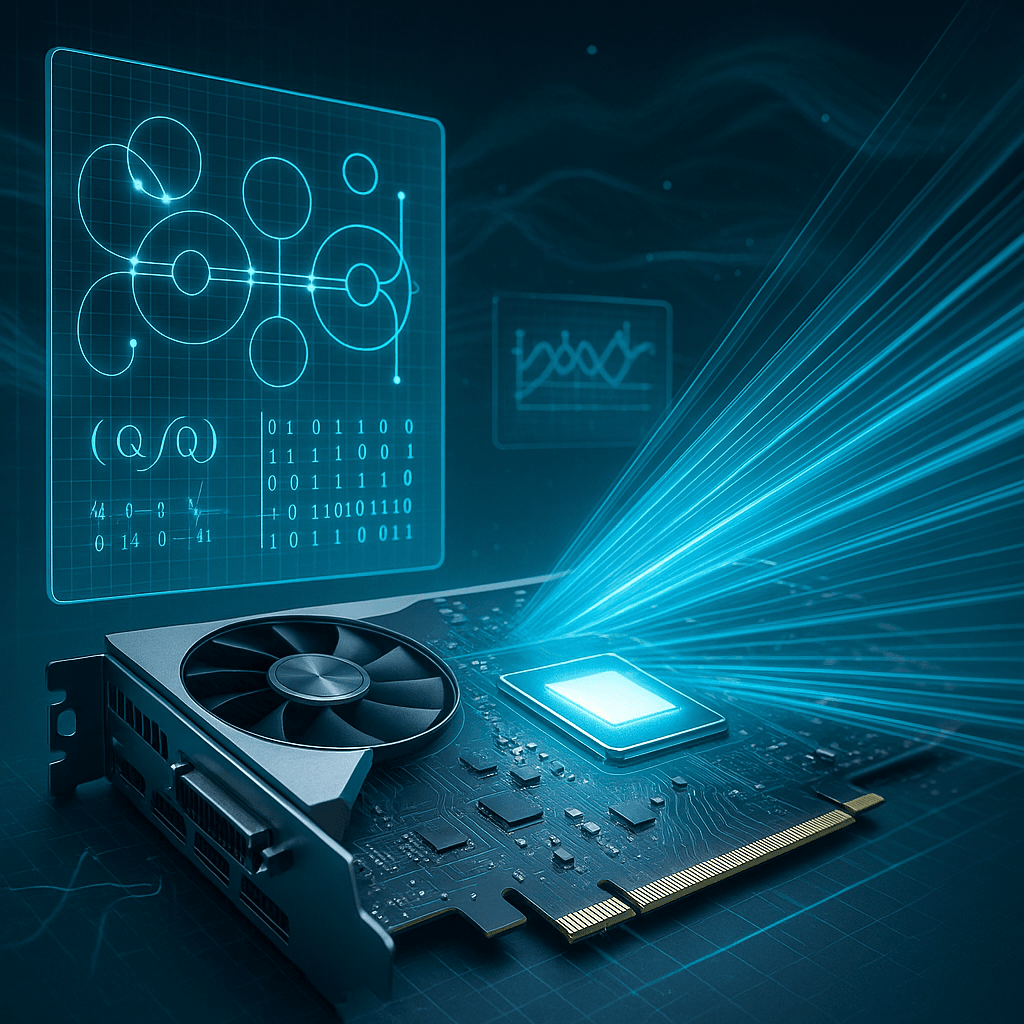Nvidia is cracking quantum computing's biggest roadblocks with GPU power that's delivering breakthrough speed gains. The company's CUDA-Q libraries are helping researchers achieve up to 4,000x performance boosts in quantum simulations and 50x faster error correction, potentially accelerating the timeline for practical quantum applications across industries.
Nvidia just dropped a quantum bombshell that could reshape the entire computing landscape. The chip giant's latest research reveals how GPU acceleration is solving quantum computing's most stubborn problems - and the performance gains are staggering.
Quantum error correction, the holy grail of quantum computing stability, just got a massive boost. Working with the University of Edinburgh, Nvidia's CUDA-Q QEC library powered a new quantum low-density parity-check decoding method called AutoDEC that doubled both speed and accuracy. But that's just the appetizer.
The real breakthrough came through Nvidia's collaboration with quantum startup QuEra. Using the company's PhysicsNeMo framework and cuDNN library, researchers developed an AI-powered decoder with transformer architecture that achieved a mind-bending 50x boost in decoding speed while improving accuracy. "AI methods offer a promising means to scale decoding to the larger-distance codes needed in future quantum computers," Nvidia's technical team explained.
This isn't just about faster number crunching - it's about making quantum computers actually useful. Quantum error correction has been the industry's biggest headache because quantum bits are incredibly fragile, prone to errors from the tiniest environmental changes. Traditional approaches required massive computational overhead that made real-world applications nearly impossible.
But Nvidia's GPU muscle is changing that equation entirely. The company's approach frontloads the computationally intensive work by training AI models ahead of time, then runs efficient inference during actual quantum operations. It's like giving quantum computers a supercharged classical co-processor that handles the heavy lifting.
The acceleration doesn't stop at error correction. Nvidia partnered with Q-CTRL and Oxford Quantum Circuits to tackle quantum circuit compilation - the process of mapping abstract quantum algorithms to physical qubit layouts on actual chips. Their GPU-accelerated ∆-Motif method delivered up to 600x speedup by using cuDF, Nvidia's data science library, to solve graph isomorphism problems that have plagued quantum researchers for years.









